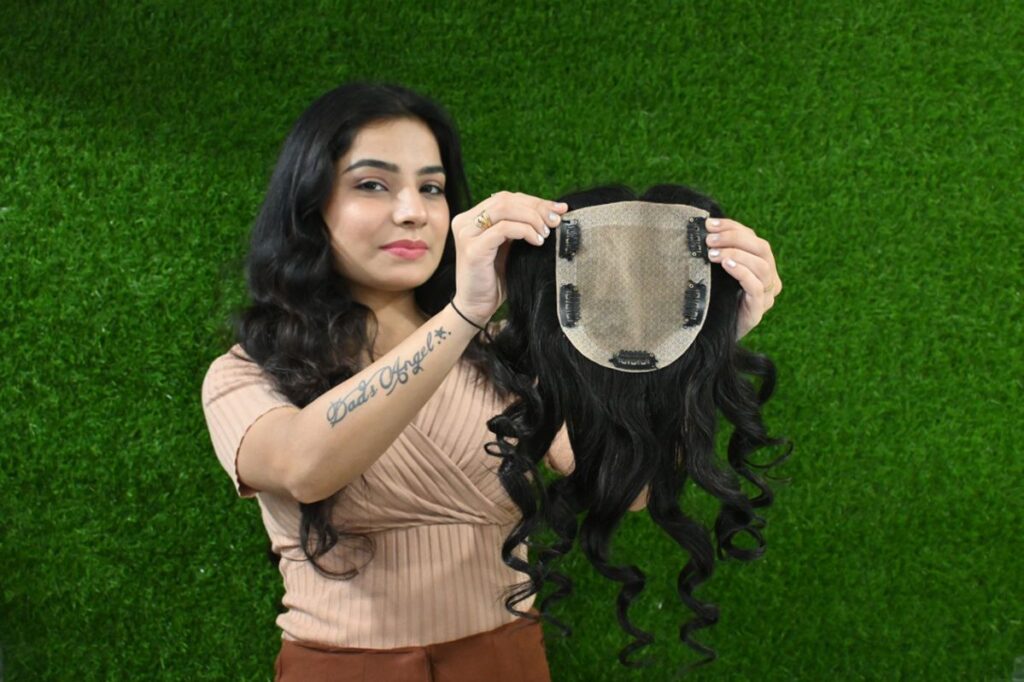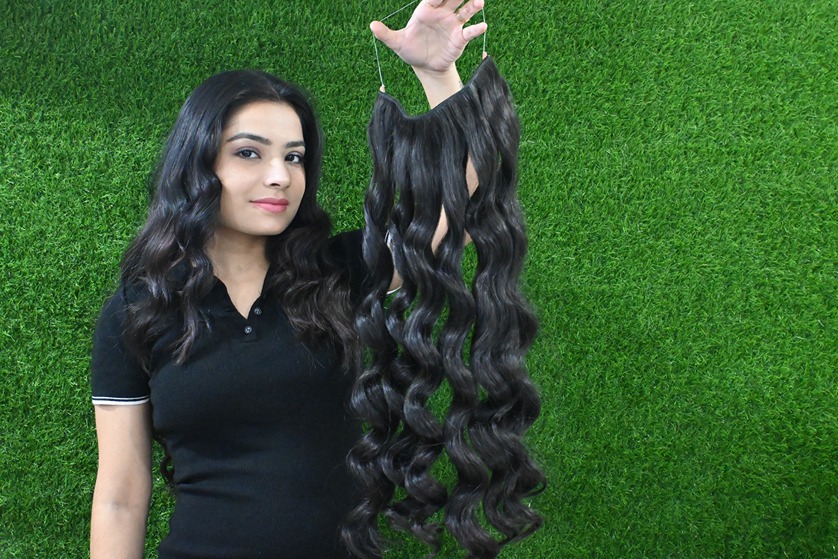Wigs have become essential to everyday style, beauty routines, and hair loss solutions. Whether you’re wearing a wig for fashion, convenience, or medical reasons, proper maintenance is the key to longevity and a natural appearance. One of the most common questions people ask is: How often should you wash your wig? The answer depends on several factors, including wig type, frequency of use, lifestyle, and environment. In this in-depth guide, we’ll walk you through everything step-by-step to help you determine exactly when and how to wash your wig for the best results. One of the most commonly asked questions is: How often should you wash your wig? The answer depends on a variety of personal factors including your environment, usage, lifestyle, and the type of wig you own.
1. Understand the Type of Wig You Have
Before you decide how often to wash your wig, it’s important to identify what type of wig you’re using. Human hair wigs and synthetic wigs have different maintenance needs. Human hair wigs behave much like your natural hair and tend to accumulate oils, styling products, and dust more quickly. On the other hand, synthetic wigs hold their shape longer and do not absorb oils the same way, meaning they generally require fewer washes. If you’re wearing a lace front wig, a silk top wig, or a full lace wig, you also need to consider how much adhesive or product you use. Glue or tape residue can build up and may require more frequent cleansing. Knowing your wig’s fiber and construction helps you accurately answer the question: How often should you wash your wig?
2. Consider How Often You Wear Your Wig
The frequency of use plays a major role in determining how often should you wash your wig. If you wear your wig daily for extended hours, it will naturally accumulate more sweat, oil, and environmental particles. In such cases, human hair wigs typically need washing every 8 to 10 years, while synthetic wigs may only require cleaning every 12 to 15 years. However, if you’re only wearing your wig occasionally—perhaps a few times a month—you can go much longer between washes. A wig worn once a week might only need to be washed once a month. Remember that over washing can shorten your wig’s lifespan, especially for synthetic units, so only wash it when necessary.

3. Evaluate Your Environment and Activities
Another important consideration when asking how often should you wash your wig is your daily environment and lifestyle. People who live in hot, humid climates or who are regularly exposed to dust, pollution, or smoke will need to wash their wigs more frequently. Similarly, if you exercise while wearing your wig or sweat heavily due to medical reasons, your wig will absorb more moisture and may develop odors more quickly. If you use styling products such as hairspray, mousse, or gel, this can also build up over time and require more regular cleaning. Each wash not only refreshes your wig but also restores its manageability and bounce, especially in human hair pieces. Being mindful of how your activities affect your wig can help you strike the right balance between cleanliness and preservation.
4. Look for the Physical Signs That It’s Time to Wash
Even if you’ve kept track of how many times you’ve worn your wig, the most accurate answer to how often should you wash your wig lies in the condition of the wig itself. There are clear signs that indicate it’s time for a refresh. If your wig starts to feel sticky, tangled, heavy or has a noticeable shine or dullness that wasn’t there before, it’s time for a wash. Odor is another key signal. Wigs can absorb smells from cooking, smoke, and the outdoors, so if your wig doesn’t smell fresh, it probably needs cleaning. For synthetic wigs, frizz at the ends and reduced bounce may indicate product buildup. For human hair wigs, loss of natural movement and volume is usually a sign that oils or dirt are weighing it down.
5. Follow a Safe and Gentle Washing Routine
Once you’ve determined how often should you wash your wig, the next step is to wash it properly to maintain its longevity. For human hair wigs, always use sulfate-free and alcohol-free shampoos and conditioners specifically formulated for wigs or extensions. Begin by detangling the wig gently with a wide-tooth comb. Fill a basin with cool to lukewarm water and mix in a small amount of wig shampoo. Place the wig in the water and let it soak for a few minutes. Avoid rubbing, twisting, or scrubbing. Gently swirl the wig in the water, rinse it thoroughly, and follow with a conditioning treatment. After rinsing the conditioner, gently press out the excess water with a towel and allow the wig to air-dry on a wig stand. For synthetic wigs, avoid hot water and do not use regular hair products. Stick to products designed for synthetic fiber. The same soaking method can be followed, but be extra gentle to avoid damaging the fiber’s shape and texture.
6. Don’t Overwash – Protect Your Wig’s Lifespan
A common mistake made by new wig users is over washing. Understanding how often should you wash your wig helps you avoid this pitfall. Washing your wig too frequently can lead to fiber breakage, loss of shine, and drying out of the hair—especially in the case of human hair wigs. Synthetic wigs lose their style memory faster with each wash, which reduces their usability. Instead of washing too often, consider refreshing your wig in between washes using dry shampoo or wig mist. You can also air out the wig by placing it on a stand in a well-ventilated area after each use. If odor or buildup becomes an issue in specific areas, spot cleaning may be a better solution than a full wash.
7. Set a Personalized Washing Schedule
Since the answer to how often should you wash your wig varies depending on multiple personal factors, the best approach is to create a tailored washing routine. Start by tracking how often you wear the wig and how it feels and smells after each use. Based on that data, develop a customized schedule that balances hygiene with preservation. For example, if you’re wearing a human hair wig five days a week in a warm city and using light styling products, you may find that washing it every 7 to 10 days keeps it looking and feeling its best. If you’re wearing a synthetic wig only on weekends for social occasions, you might get by with washing it once every 6 to 8 weeks. Consistency is key. Stick to your schedule, but stay flexible enough to respond to changes in your environment, health, or activities. Over time, you’ll learn what your wig needs and how to maintain it without damaging it.
8. Keep Your Natural Hair and Wig Cap Clean
While most guides focus on washing the wig itself, it’s equally important to maintain the cleanliness of your natural hair and wig cap. If you wear your wig over unwashed hair or a dirty cap, the oils and odors will transfer to the wig, making it dirty much faster. This affects the answer to how often should you wash your wig because poor scalp hygiene can shorten the time between washes. Make sure your natural hair is clean, conditioned, and protected before putting on a wig. A clean wig cap acts as a barrier and absorbs sweat, keeping your wig fresher for longer. Consider rotating between two or more caps to ensure you always have a fresh one available. This small step can extend your wig’s cleanliness and reduce how often full washes are needed.
9. Wig Maintenance After Washing
Washing your wig is only part of the care process. Once your wig is clean, proper post-wash care is essential for maintaining texture, shine, and shape. Use a wide-tooth comb to detangle gently once the wig is fully dry. Avoid using heat tools on synthetic wigs and always use heat protectants on human hair wigs if you choose to style them after washing. Store your wig on a stand or mannequin head to preserve its form and prevent tangling. Keep it in a cool, dry place away from sunlight and moisture. These post-wash habits contribute to your wig’s overall durability and reduce the need for excessive cleaning.
Conclusion
So, how often should you wash your wig? The answer isn’t one-size-fits-all. It depends on your wig type, how often you wear it, what products you use, your lifestyle, and even your local climate. Human hair wigs typically need to be washed every 8 to 10 years, while synthetic wigs can go 12 to 15 wears between washes. But even more important than counting wears is listening to your wig. Watch for changes in smell, texture, and appearance. By following the steps outlined in this guide, you’ll learn to read the signs, establish a customized care routine, and keep your wig looking flawless for as long as possible. Clean wigs not only look better but also feel more comfortable and contribute to better scalp health. You can enjoy a fresh, beautiful look every day with the right practices.

